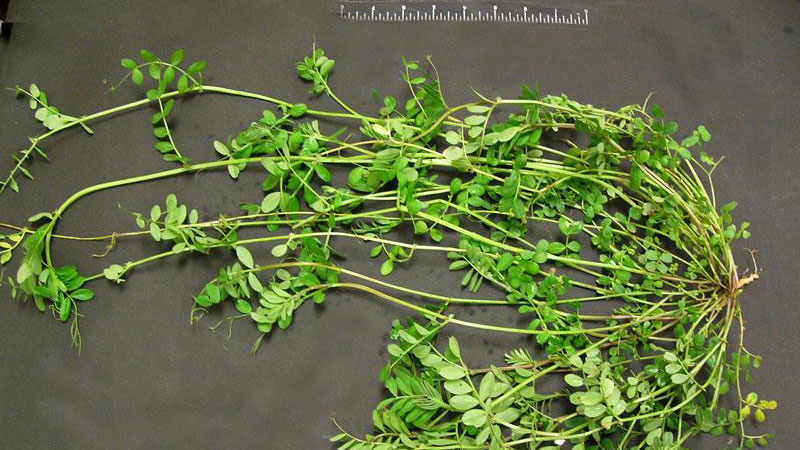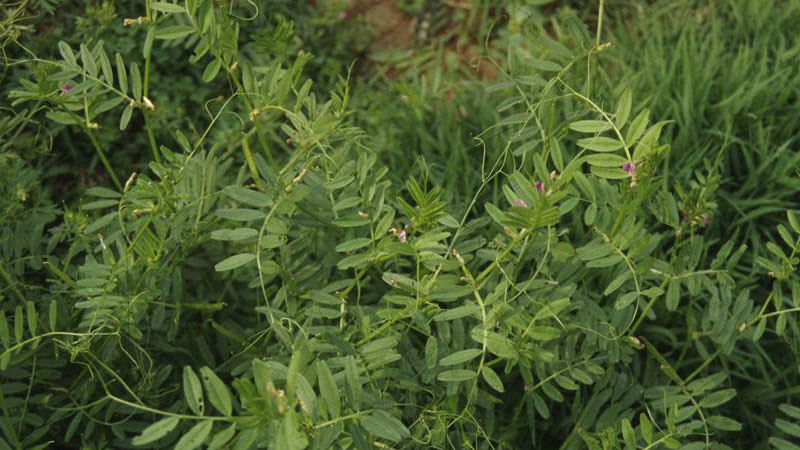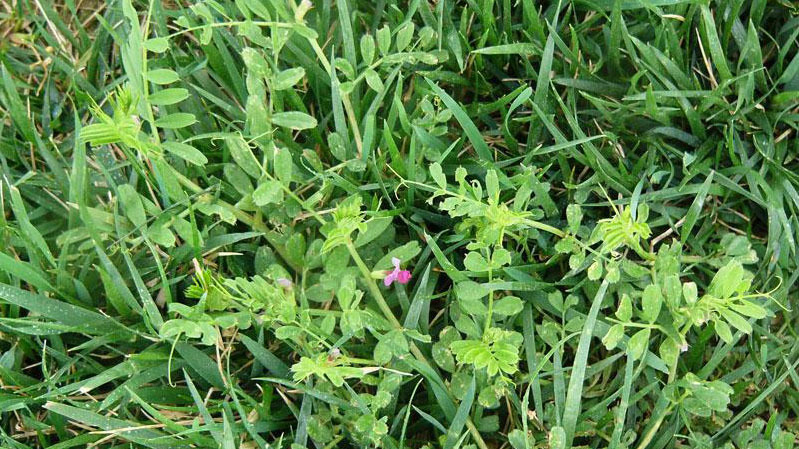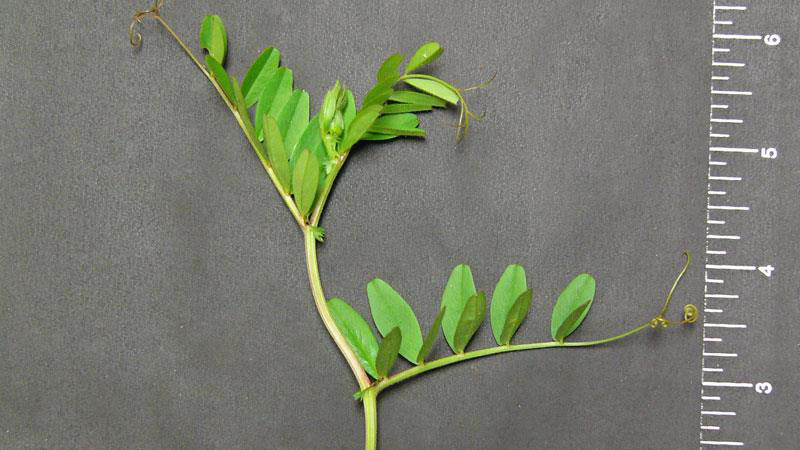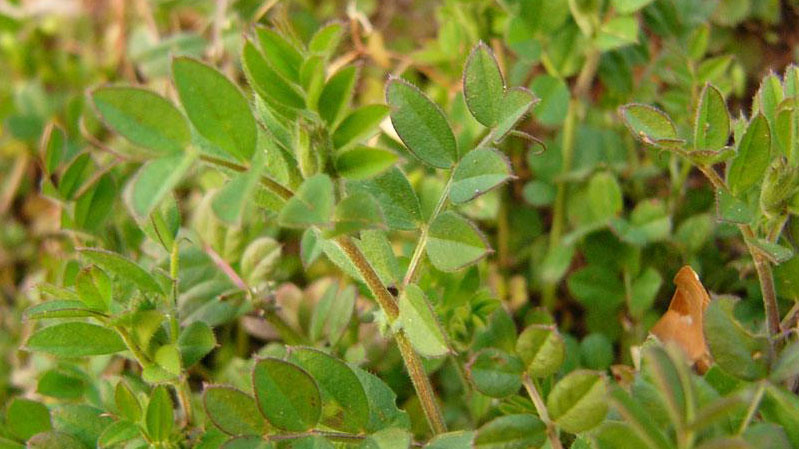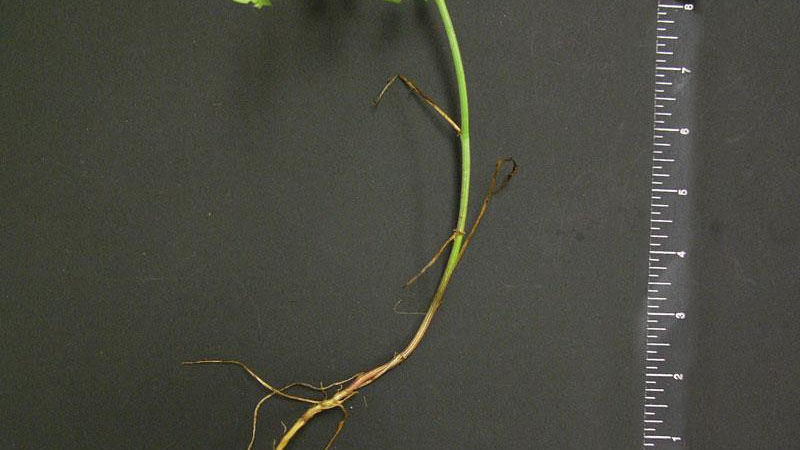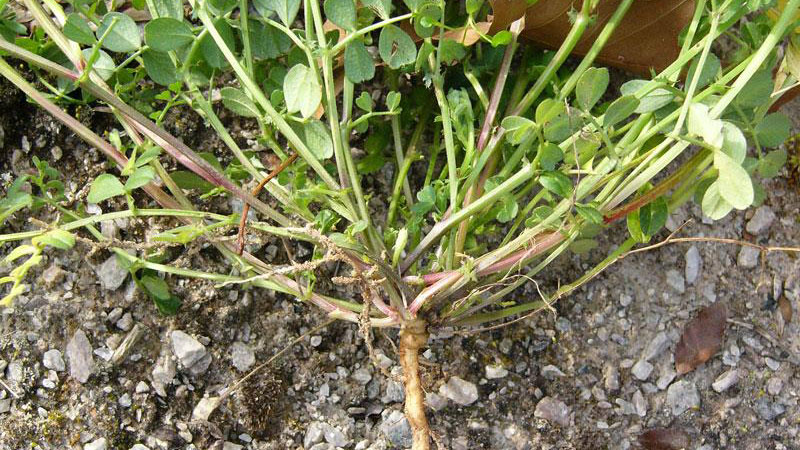Description
Common vetch (Vicia sativa) is a trailing winter annual weed that forms large mats of vegetation. It is common to waste areas and roadsides. The leaves of common vetch are very narrow, alternately arranged and compound. Tendrils form on the ends of the leaves. Long stems arise from fibrous roots, and flowers are purple. Late in the season after the flowers drop, seed pods form.
Cultural Control
Winter annual broadleaf weeds germinate in the fall or winter and grow during any warm weather, which may occur in the winter, but otherwise remain somewhat dormant during the winter. They resume growth and produce seed in the spring and die as temperatures increase in late spring and early summer. They quickly invade thin turf areas especially where there is good soil moisture. Shade may also encourage growth. Many have a prostrate growth habit and are not affected by mowing. A dense, vigorous turf is the best way to reduce the encroachment of winter annual weeds. First, select adapted turfgrass cultivars for your area and then properly fertilize, mow, and water to encourage dense growth.
Species Data
- GROWTH SEASON / LIFE CYCLE
- winter annual weed
- GROWTH HABIT
- LEAFLET NUMBER
- four or more
- LEAF MARGIN
- smooth
- LEAF HAIRS
- may or may not have leaf hairs
- LEAF / LEAFLET SHAPE
- linear / oblong / oval / egg-shaped / elliptical; tendrils on ends of older leaves - aid in climbing
- LEAF WIDTH
- 1 - 2 inches
- LEAF VENATION
- pinnate
- LEAF ARRANGEMENT
- ROOT TYPE
- fibrous
- FLOWER COLOR
Publication date: Nov. 27, 2017
N.C. Cooperative Extension prohibits discrimination and harassment regardless of age, color, disability, family and marital status, gender identity, national origin, political beliefs, race, religion, sex (including pregnancy), sexual orientation and veteran status.

